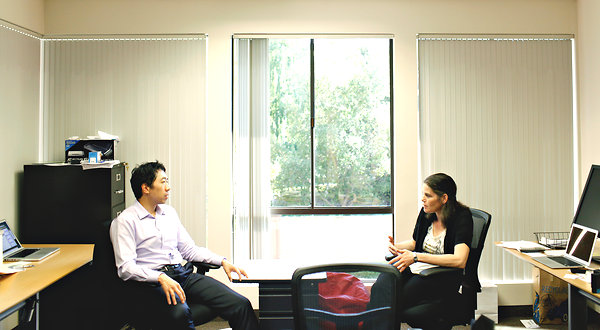Universities Reshaping Education on the Web

Daphne Koller and Andrew Ng of Stanford are adding 12 universities to Coursera, the online education venture they founded.
Now, the partners will include the California Institute of Technology; Duke University; the Georgia Institute of Technology; Johns Hopkins University; Rice University; the University of California, San Francisco; the University of Illinois, Urbana-Champaign; the University of Washington; and the University of Virginia, where the debate over online education was cited in last’s month’s ousting — quickly overturned — of its president, Teresa A. Sullivan. Foreign partners include the University of Edinburgh in Scotland, the University of Toronto and EPF Lausanne, a technical university in Switzerland.
And some of them will offer credit.
“This is the tsunami,” said Richard A. DeMillo, the director of the Center for 21st Century Universities at Georgia Tech. “It’s all so new that everyone’s feeling their way around, but the potential upside for this experiment is so big that it’s hard for me to imagine any large research university that wouldn’t want to be involved.”
Because of technological advances — among them, the greatly improved quality of online delivery platforms, the ability to personalize material and the capacity to analyze huge numbers of student experiences to see which approach works best — MOOCs are likely to be a game-changer, opening higher education to hundreds of millions of people.
To date, most MOOCs have covered computer science, math and engineering, but Coursera is expanding into areas like medicine, poetry and history. MOOCs were largely unknown until a wave of publicity last year about Stanford University’s free online artificial intelligence course attracted 160,000 students from 190 countries. Only a small percentage of the students completed the course, but even so, the numbers were staggering.
“The fact that so many people are so curious about these courses shows the yearning for education,” said Molly Corbett Broad, president of the American Council on Education. “There are going to be lots of bumps in the road, but this is a very important experiment at a very substantial scale.”
So far, MOOCs have offered no credit, just a “statement of accomplishment” and a grade. But the University of Washington said it planned to offer credit for its Coursera offerings this fall, and other online ventures are also moving in that direction. David P. Szatmary, the university’s vice provost, said that to earn credit, students would probably have to pay a fee, do extra assignments and work with an instructor.
Experts say it is too soon to predict how MOOCs will play out, or which venture will emerge as the leader. Coursera, with about $22 million in financing, including $3.7 million in equity investment from Caltech and Penn, may currently have the edge. But no one is counting out edX, a joint venture of Harvard and the Massachusetts Institute of Technology, or Udacity, the company founded by Sebastian Thrun of Stanford, who taught the artificial intelligence course last year.
Each company offers online materials broken into manageable chunks, with short video segments, interactive quizzes and other activities — as well as online forums where students answer one another’s questions.
But even Mr. Thrun, a master of MOOCs, cautioned that for all their promise, the courses are still experimental. “I think we are rushing this a little bit,” he said. “I haven’t seen a single study showing that online learning is as good as other learning.”
Worldwide access is Coursera’s goal. “EPF Lausanne, which offers courses in French, opens up access for students in half of Africa,” Ms. Koller said. Each university designs and produces its own courses and decides whether to offer credit.
Coursera does not pay the universities, and the universities do not pay Coursera, but both incur substantial costs. Contracts provide that if a revenue stream emerges, the company and the universities will share it.
The New York Times
(http://www.nytimes.com/2012/07/17/education/consortium-of-colleges-takes…)


